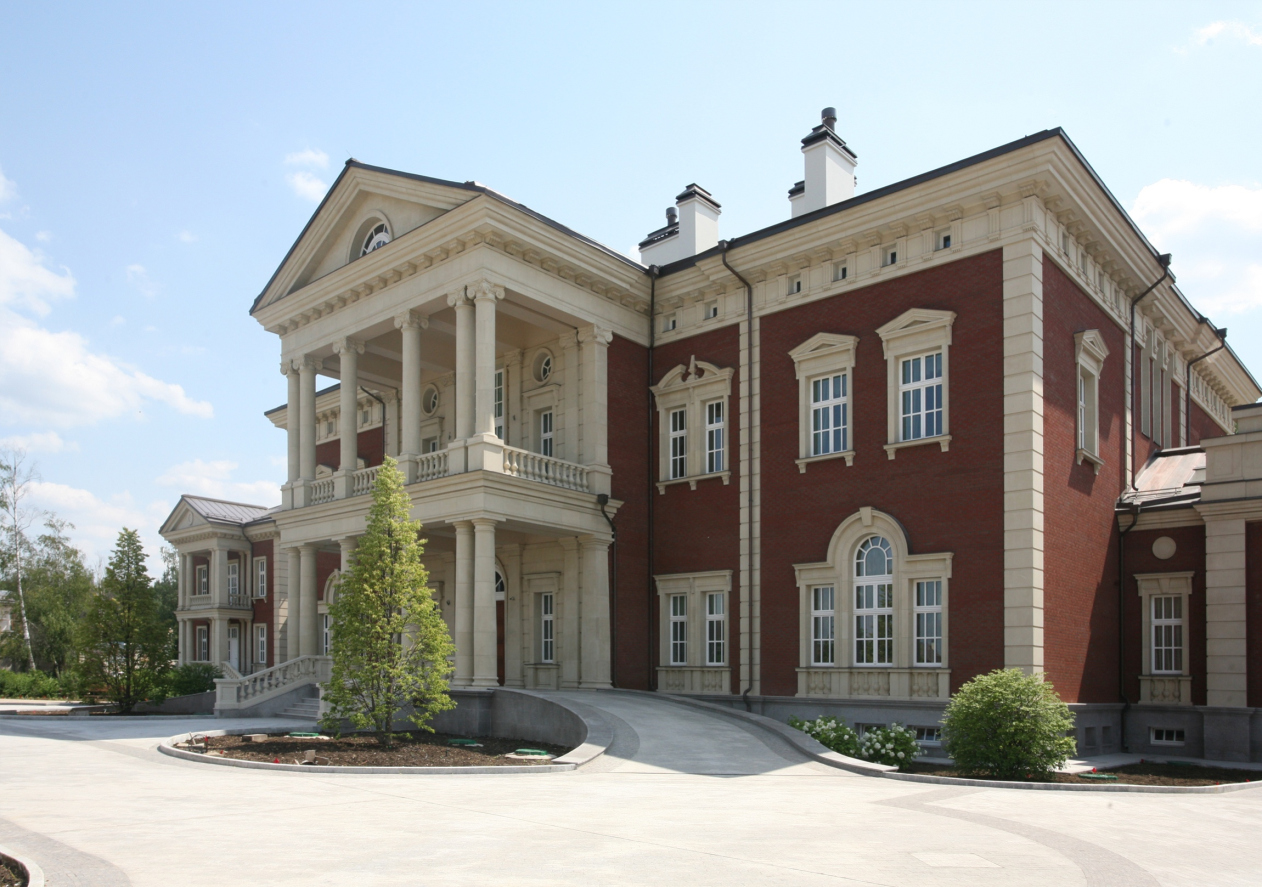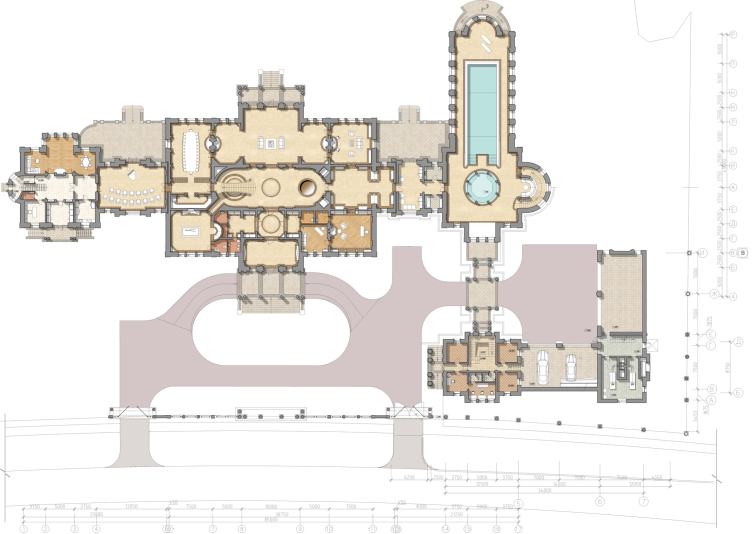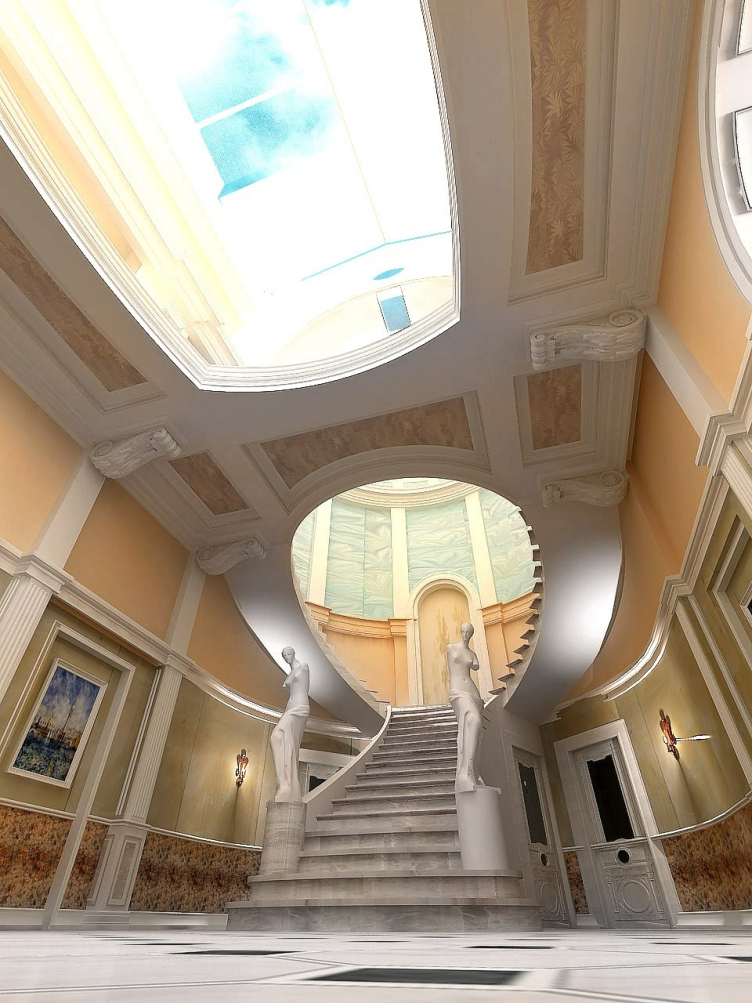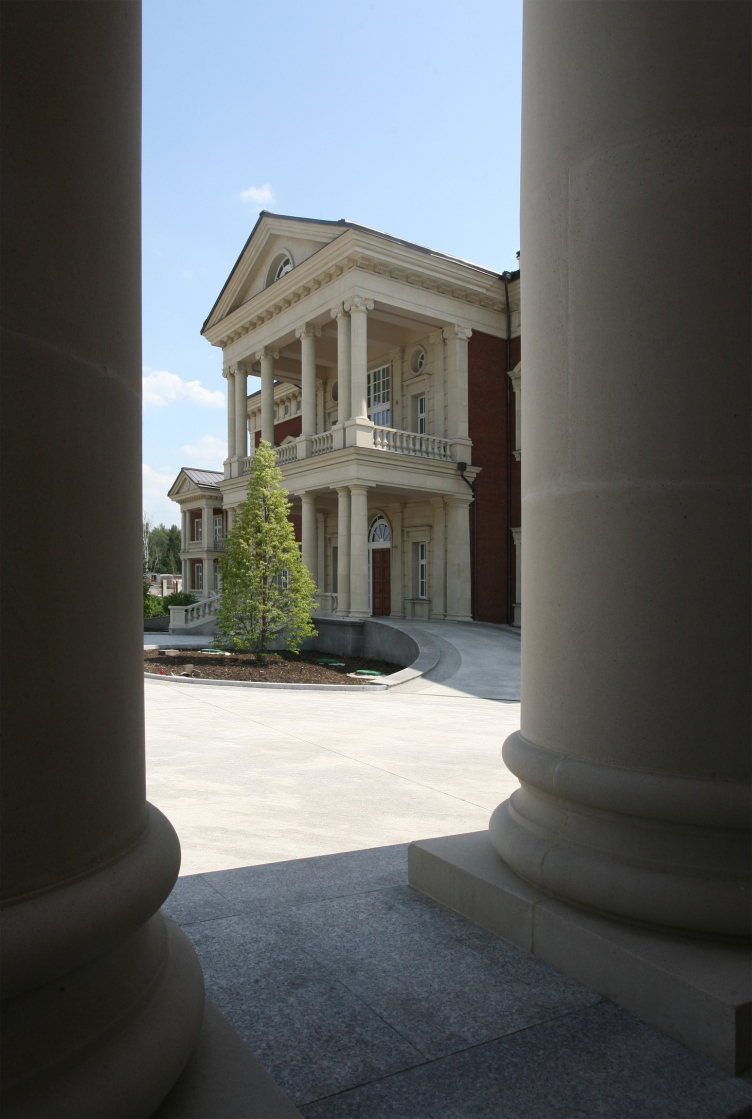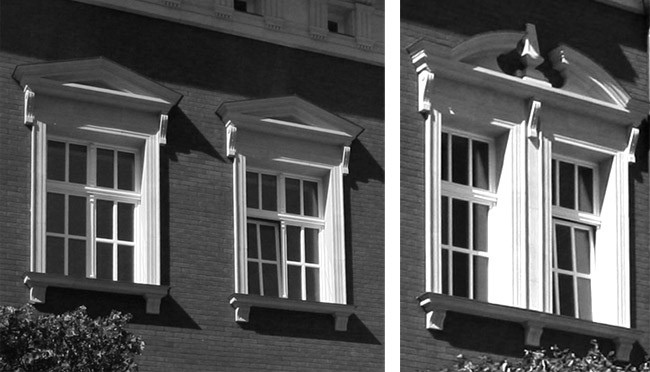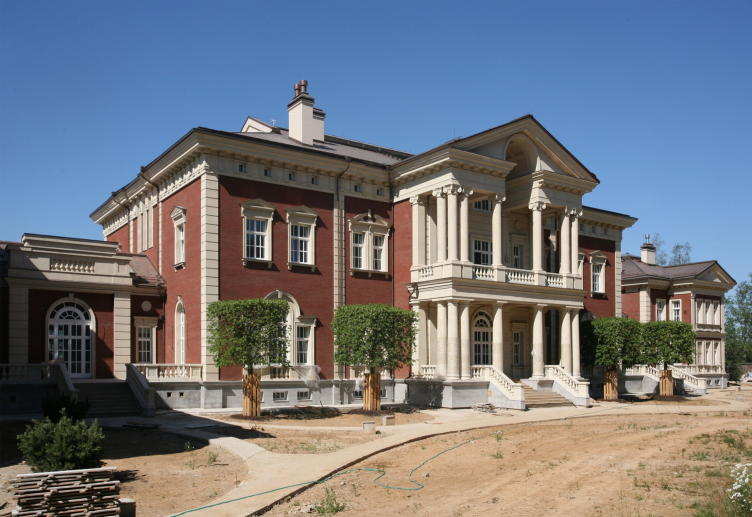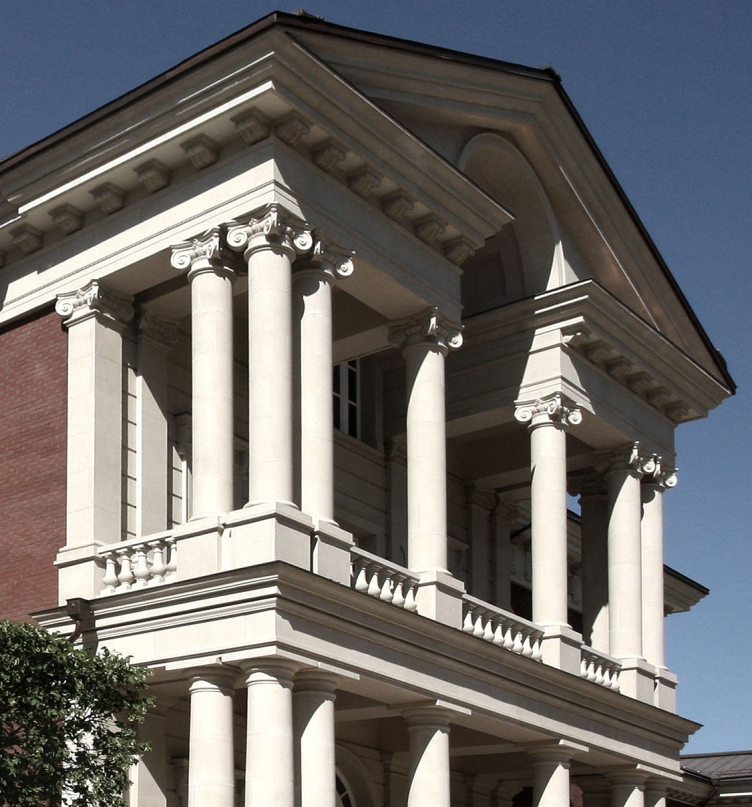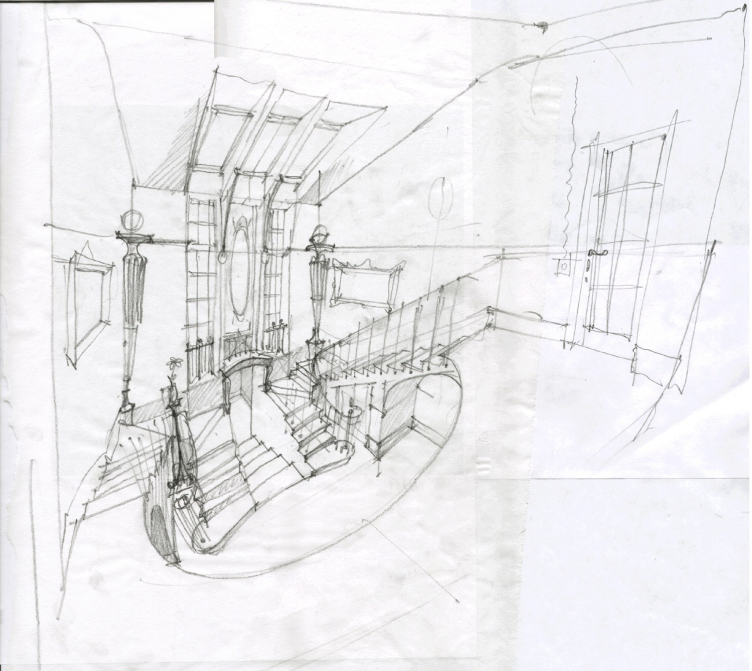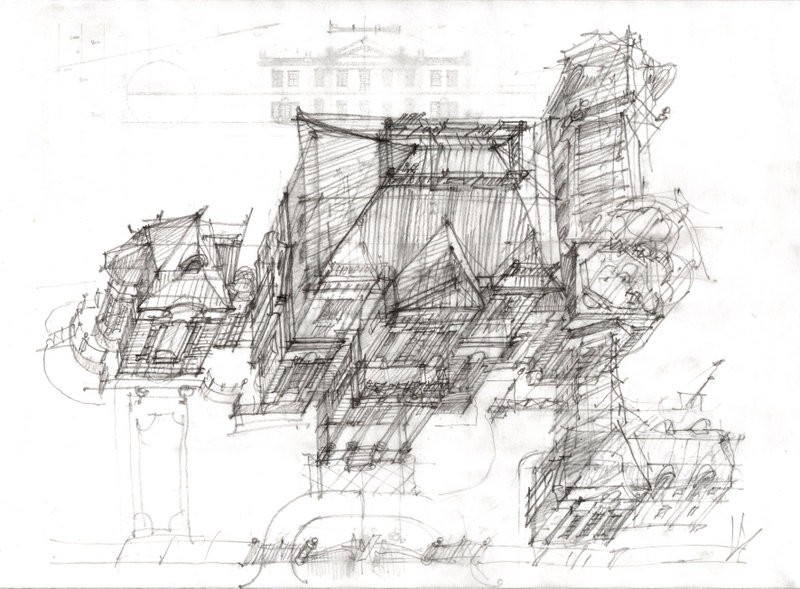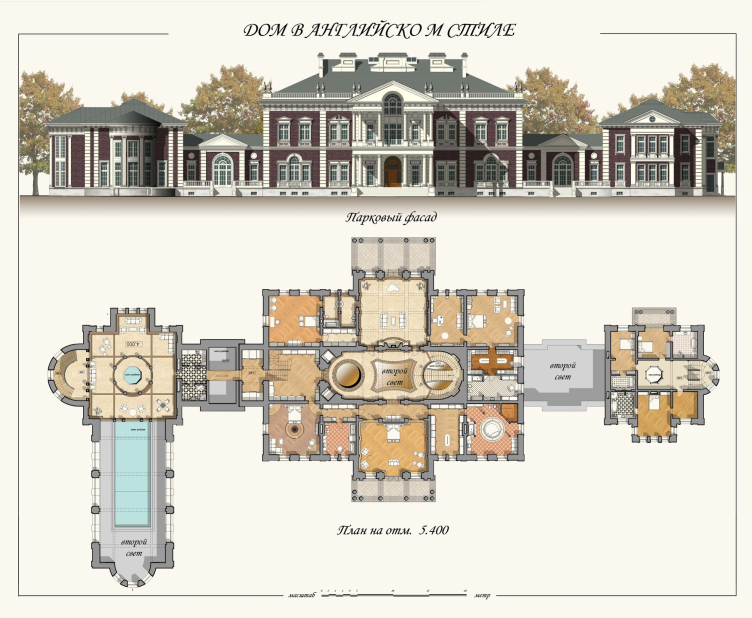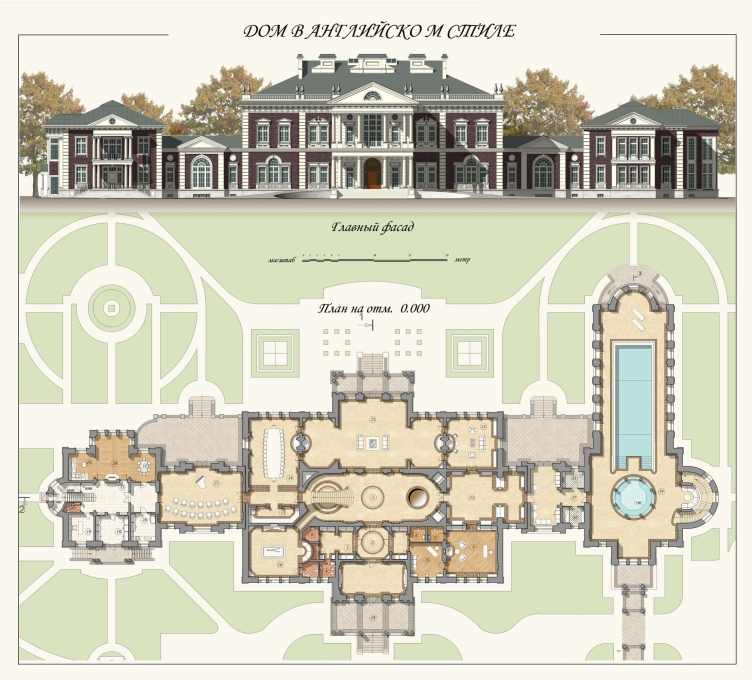The central
part of the house is a large two-storied volume, crowned with a hipped
steep-pitched roof. The two main facades, turned onto the street and
onto the woodland respectively, sport a double-level balcony portico that
protrudes far ahead and thus becomes a very spacious one; in the summertime it
will become a cool shady terrace full of fresh air, and in the wintertime it
will also make a safe shelter from the snow. The side walls of the house are
branching with two wings that also serve as overpasses leading to two little
side houses, also double-storied but less tall and of a more stone-architecture
character: they have fewer walls and more windows, no porticos but instead they
get the semi-circular exedras, the shapes that are capable of giving the indoor
space and the outside facades the air of light elegance of the classicism style.
At the first glance cast at the main façade of the house with its wings and
overpasses, the architectural ensemble look perfectly symmetric. This is not
the case, however. One of the
two outhouses is stretched transversely to the main longitudinal axis, and for
a good reason: it contains the swimming pool, an essential attribute of any
There are several historical
“reminiscences” of this kind in the house, the most noteworthy one being the
underground rotunda in the basement floor. It is surrounded by an arched
colonnade, and the deck of the first floor above it is cut by a large circular
opening surrounded by a balustrade. Entering through the front porch, the guest finds this opening on the
right, and, leaning on the balustrade, he or she can take a peek into the
semi-underground world to see the arches, the columns and the statue – effect
similar to the discovery of the crypt in the cathedral or an ancient cellar,
excavated and preserved by archaeologists in some museum. This is a
theatrical technique, designed to make the front space of the palace
interesting and fascinating to the visitor.
Higher up, directly above the opening of the “rotunda”, in the ceiling of the
first floor (or, if viewed from above, in the floor deck of the second), there
is yet another opening, just as round, with a balustrade. One can also look
down through it to see the underground columns in the perspective of two occuli
– this must be even more fascinating. Nearby, in the floor of the second
storey, directly in the middle of thee hall, there is yet another “well”… a
window that opens downwards. And finally, still higher up, in the ceiling of
the second floor, there is yet one more opening, this time large and elongated,
in the shaped of a smoothed-out “eight” – this topmost layer is turned into a
balcony skirting the main halls along their perimeter. The entire structure is
covered by a glass ceiling that turns the whole space into some kind of atrium,
or a glass-roofed courtyard.
Thus the four tiers of the front part of the house get interconnected with
multiple vertical ties. The entire space is literally “stitched though” with
air wells, and the whole intrigue is based exactly on that. The guests (as well
as the hosts) can not only wander up and down the house but also look up and
down the wells, seeing one another’s eyes. Coming to mind are things like baroque, mannerism, and, of course, the
oculus, painted by Andrea Mantegna in Camera degli Sposi. In the latter,
the ceiling bears the picture of a round opening with clouds beyond it and curious
faces looking in. In the
The main impression, however, is made by the staircase leading from the first
floor to the second. One central staircase leads down, and two sets of stairs
lead up. This is a real grand staircase, the kind that in some modern feature
film about the English aristocracy Cinderella beauties and queens would go down.
It is not by chance that the English are mentioned yet again: the house is
built in the English style. Over the past 10 years
In this particular case, the architects base themselves on two things. The
first one is that same Palladian style: the portico, the two almost-symmetric
outhouses, the Palladian windows from the renaissance treatises (vertically
divided into three parts, the top section finishing in an arch). The second one
is the English renaissance of the Jacobean era, characteristic of which are the
red-brick walls with white rusticated stones on the corners, high-pitched roofs
(but with no garrets that were at the time so popular with the French), and
with large chimneys (in this case, the little decorative walls simulating these
chimneys crown the roof, masking the glass above the atrium). The large windows
with the perpendicular white stone sashes of the recognizable vertical
proportions dating back to the Tudor gothic style...
Or let us take a look at such a decorative device: two windows are “glued”
together to form a single one and get one common gable with a small acroter in
the shape of a classic obelisk. The twisted phials over the balustrade
surrounding the roof are not gothic and not quite classical either. For a long
time,
The version of the English house proposed by Oleg Carlson is somewhere in the
middle between the Jacobean architecture of the early XVII century, Palladian
style of this same century’s second half, and the Jacobean architecture of the
XIX century. Probably, it is this oscillation between the pure classics and the
national peculiarities that the entire English architecture of the new era is
all about. It must be admitted that the architect made the grade and the house
looks recognizable indeed.
Recognizable, even though the main effect of this architectural project lies
not on the outside, of course, but on the inside – in the four-tier grand
atrium of a hall, in its multi-layer saturated space, “packed” inside the
respectable British walls, just like a surprise into a gift box might be.
Palladian Style Improvisation
In this issue, we present the project of an “English House” – a palace built by Oleg Carlson for a commissioner from Moscow region. The facades of the house simulate the image of a British country palace and serve to conceal a complex and intriguingly sophisticated multi-layer space behind them.
